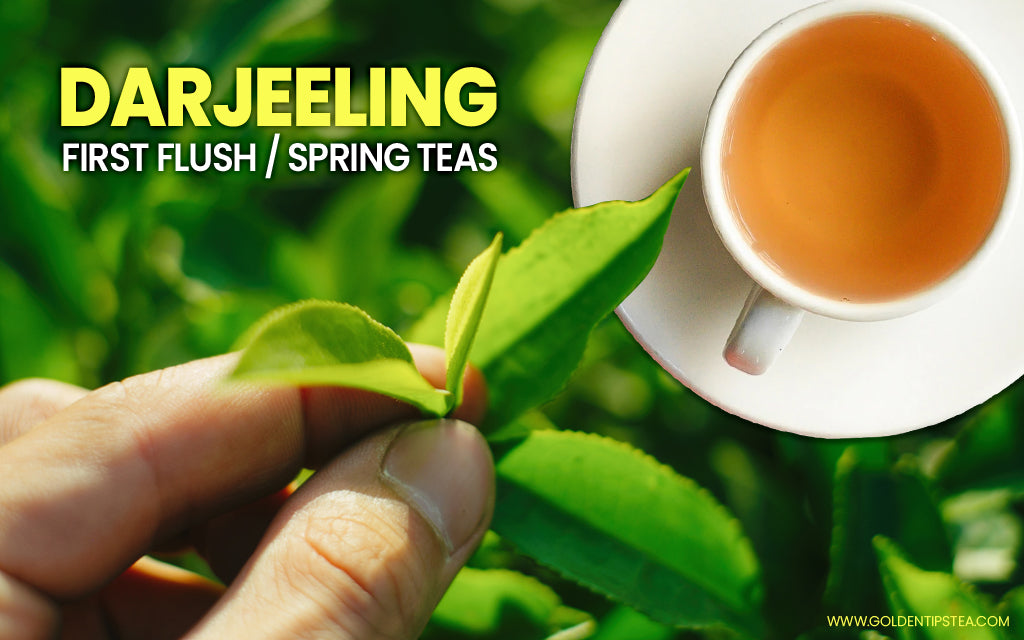
The Champagne of Teas Part 1: Darjeeling First Flush
The spring season brings with it new colours and warmth. It’s also the time of year where an incredibly valuable variety of tea is harvested in regions of India – the Darjeeling First Flush. Grown in the mountainous region of West Bengal, the Darjeeling First Flush tea is prized for its delicate, floral, and astringent flavours, in addition to the distinct light golden colour that characterizes it.
First Flush Harvest.
Darjeeling First Flush tea leaves are harvested between early-March till April. However, they may be harvested as early as mid-February in some low lying tea estates in small lots at the beginning of the spring season. The term “first flush” refers to the fact that the leaves were picked during the first tea harvest of the season.
These young small-sized leaves provide the tea with the unique flavour and aromatic qualities it is known for around the world.
Darjeeling First Flush leaves are generally younger and undergo less processing and oxidation than other varieties of black tea. It gives processed First Flush leaves a greener appearance than their counterparts.
Later tea flushes such as; the Second Flush teas are harvested from May to June, or the Monsoon Flush teas are harvested from June to October are characterized by stronger and bolder flavours. However, these flavours are noticeably less complex than that of the First Flush. They also experience more intense oxidation during their processing, resulting in a darker tea.
What Makes Darjeeling Unique?
Darjeeling tea is a distinct tea species that isn’t actually indigenous to India. It’s a Chinese variety of tea known as Camellia Sinensis that was planted by the British Government in the 1850s. However, the tea species were able to adapt to the high altitude misty conditions of the Darjeeling region and grew incredibly well.
This unique setting imparted characteristics to the tea that made it distinct from other Indian or Chinese teas. It is neither an oolong tea nor a black tea, but still possesses certain characteristics of each one.
Darjeeling First Flush is generally brewed at a lower temperature than other black teas due to the fresh and relatively unprocessed nature of its green leaves. The tea’s complex yet delicate flavour should be enjoyed on its own to enjoy the freshness of the leaves in its entirety. However, you can add milk and sugar, although at the cost of significantly masking or altering its distinct flavour.
The Darjeeling Logo

The valuable nature of this tea makes it a prime target for counterfeit tea producers who often attempt to sell their cheaper lower-quality imitations as actual Darjeeling First Flush. The issue became so prevalent that the Tea Board of India made it compulsory for producers and sellers to obtain a license prior to engaging in the sale and distribution of Darjeeling teas.
The Darjeeling logo was also created in 1986 to ensure any producers or distributors of tea that used the Darjeeling label were meeting strict quality guidelines to preserve the high quality that Darjeeling tea is known for.
The Darjeeling region where the tea is grown is almost as exciting to learn about as the tea itself. Join us in Part 2 of our look at Darjeeling First Flush teas as we explore the region of Darjeeling and its rich history.













